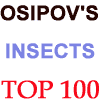Hylesia (Linylesia) latigra
Hylesia (Linylesia) latigra
hye-LEES-ee-uhMlih-nye-LEE-see-uhMluh-TYE-gruh
Druce, 1884

Hylesia (Linylesia) latigra HT male, 44mm, La Tigra NP, Francisco Morazan, Honduras,
June 21, 2013, 1950m, on my home computer only.
This site has been created by Bill Oehlke.
Comments, suggestions and/or additional information are welcomed by Bill.

Hylesia hubbelli?? male, Nicaragua,
courtesy of Jean-Michel Maes.
Based on information in the Entomo-Satsphingia journal, Jargang 9 Heft 03(A) 06.09.2016, the specimen directly above from Nicaragua might be the
recently (2016) described Hylesia (Linylesia) latigra, based on larger more oblong hw ocellus. This would represent a southern extension of latigra's range
which is described only from Honduras thus far.
TAXONOMY:
Superfamily: Bombycoidea, Latreille, 1802
Family: Saturniidae, Boisduval, [1837] 1834
Subfamily: Hemileucinae, Grote & Robinson, 1866
Tribe: Hemileucini, Grote & Robinson, 1866
Genus: Hylesia, Hubner, [1820]
Subgenus: Linylesia, Brechlin & Meister, 2016
|
DISTRIBUTION:
Hylesia (Linylesia) latigra
(wingspan: males: 44mm; females: mm; forewing length: males: 25-30mm; females: 33-36mm) flies in
Honduras: Francisco Morazan: La Tigra NP at elevations around 1950m.
In 2016, Brechlin and Meister designated the subgenus (Linylesia) to include the following species in the hubbelli subgroup:
hubbelli, latigra (new, 2016, from Francisco Morazan, Honduras) and guiyasotana (new, 2016, from Ocotopeque, Honduras). All have the small black dot in both the forewing and hindwing cell.
In the same publication they depict hubbelli from Cortes, Honduras. Lemaire indicates the holotype male of hubbelli as being from Chiapas, Mexico.
I would not be surprised if the more recently described species in the hubbelli subgroup can also be found outside of Honduras. (Bill Oehlke)
FLIGHT TIMES AND PREFERRED FOOD PLANTS:
Specimens have been taken in June with male coming to lights much more readily than females. Specific hostplants are unknown, but this species probably feeds on a number of hosts.

Hylesia (Linylesia) latigra AT female, La Tigra NP, Francisco Morazan, Honduras,
June 21, 2013, 1950m, on my home computer only.
ECLOSION, SCENTING AND MATING:
Females extend a scent gland from the tip of the abdomen. Males use highly developed
antennae to track the airbourne pheromone to locate the females.
OVA, LARVAE, COCOONS, AND PUPAE:
Eggs are probably deposited in layers in one large, hair-covered cluster. Larvae are probably
highly gregarious.
Urticating spines offer the Hylesia larvae much protection, and stinging caterpillars must be handled with great care.
It is hoped that this alphabetical listing followed by the common name of the anticipated foodplant will prove useful. The list is not exhaustive.
Experimenting with closely related foodplants is worthwhile.
Acacia baileyana
Acacia tenuifolia
Allophyllus occidentalis
Banisteriopsis muricata
Bauhinia ungulata
Bombacopsis quinatum
Byrsonima crassifoila
Byttneria aculeata
B. catalpaefolia
Calliandra emarginata
Calycophyllum candidissimum........
Caseara arguta
Caseara sylvestris
Cassia biflora
Chomelia spinosa
Cordia alliodora
Cordia corymbosa
Cupania guatemalensis
Dalbergia retusa
Diphysa robiniodes
Enterolobium cyclocarpum
Erythroxylum havanense
Glericidia sepium
Gouania polygama
Guazuma ulmifolia
Guettarda macrosperma
Hirtella racemosa
Hymenaea courbaril
Hyptis pectinata
Inga vera
Lantana camara
Lonchocarpus minimiflorus
L. costaricensis
Luehea speciosa
Lysiloma auritum
Machaerium kegelii
Malvaviscus arboreus
Mimosa pigra
Muntingia calabura
Myrospermum frutescens
Ouratea lucens
Paullinia cururu
Persea americana
Pithecellobium lanceolatum......
Psidium guineense
Robinia pseudoacacia
Stigmaphyllon elliticum
Serjania schiedeana
Tabebuia rosea
Urvillea ulmacea
Xanthoxylum seulosum
Zuelania guidonia
| Bailey's acacia
Acacia
Palo blanco
Banisteriopsis muricata
Bauhinia ungulata
Bombacopsis quinatum
Nanche
Tezak/Zarza
Tezak/Zarza
Powder puff
Degame
Caseara arguta
Caseara sylvestris
Cassia
Chomelia spinosa
Apacahuite /Trompillo
Cordia
Sacpom/Grande betty
Dalbergia retusa
Diphysa robiniodes
Orejon/Elephant's ear
Coca
Nicarauan cocoa-shade
Jaboncillo
Guacima/Bay cedar
Guettarda macrosperma
pigeonplum
West Indian locust
Hyptis pectinata
Inga vera
Yellow sage
Cabbagebark
Cabbagebark
Luehea speciosa
Quiebracha
Machaerium kegelii
Wax mallow
Zarza
Jamaica cherry/Strawberry tree
Myrospermum frutescens
Ouratea lucens
Guarana
Avocado
Blackbead
Guava
Black locust/False acacia
Stigmaphyllon elliticum
Serjania schiedeana
Palo de rosa
Apaac
Prickly ash
Tamay
|
Return to Hylesia genus
The pronunciation of scientific names is troublesome for many. The "suggestion" at the top of the page is merely a suggestion. It is based on
commonly accepted English pronunciation of Greek names and/or some fairly well accepted "rules" for latinized scientific names.
The suggested pronunciations, on this page and on other pages, are primarily put forward to assist those who hear with internal ears as they read.
There are many collectors from different countries whose intonations and accents would be different.
I do not know the origin of the genus name Hylesia.
The subspecies name (Linylesia) is a combination of lineata, the species which serves as type for the subgenus, with Hylesia.
The species name "latigra" is indicative of the specimen type locale in La Tigra NP, Francisco Morazan, Honduras.

| 
Support this website and visit other insect sites by
clicking flashing butterfly links to left or right.
|

|
Use your browser "Back" button to return to the previous page.




